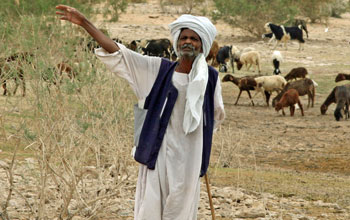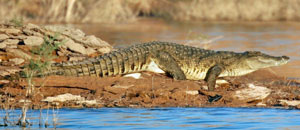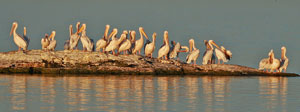Lake Nasser - Egypts Natural Treasure
Spectaculer nature and excellent fresh water fishing
It’s hard to comprehend how big Lake Nasser really is; for example, the flying distance between London Heathrow airport and Cairo airport is 3,524 km – the shoreline of Lake Nasser is 7,844 km twice that distance!
The best way to experience Lake Nasser is to come on a small boat safari which is a more rewarding experience than traveling down the middle of the lake in a cruise ship. Get a rewarding close up of this unique lake from the comfort of your own private live aboard boat supported by a well-appointed mother ship.
There is a lot to see and do; it’s like visiting a game park, view spectacular bird life, meet desert Bedouin and go for walks in a beautiful desert environment. If you are a keen fisherman the lake is famous for its fresh water fishing, catch and release huge Nile Perch and hard fighting Tiger Fish. At the same time enjoy the experience of an old style African safari waited on ‘hand & foot’ by an experienced team of Nubian safari staff and guides.
Imagine a vast body of fresh water located in the middle of the largest and driest desert on our planet. A magical wilderness of stunning desert scenery, the shoreline a variety of desert landscapes, hilly and rugged, or with desert dunes cascading on to sandy freshwater beaches; an atmosphere of vastness and adventure.
The West bank of the lake has vast stretches of shallow shore line which attracts wild birds. In contrast, the East bank is mostly made up of wild and rugged desert landscapes where the Nile has pushed up against a range of mountains on its way north to the Mediterranean Sea.
Over 100 resident species of birds have been recorded on the lake which is also an important staging point for migrant and over-wintering birds. During the autumn and spring months millions of birds pass across the lake following the Nile River on their annual migrations between the continents of Europe, Asia and Africa. These bird populations have created a food chain with an impressive variety of mammals and reptiles. In many areas, crocodiles and monitor lizards make their home; other types of wildlife include Dorcas gazelle, jackals, desert fox, and various smaller desert mammals can also be found.
There are also several important Nubian archaeological sites which have been dismantled block by block and moved to higher ground when the lake inundated the Nile Valley. The most notable are the temples of Abu Simbel, built by the Pharaoh Ramses II in 1200 BC; four immense statues of Ramses address the lake, designed as a show of strength, an awesome sentinel watching over any boats sailing into the Pharaoh’s lands.
The residents are Bedouin camel and sheep herdsmen, who are seen grazing their flocks on the sparse vegetation growing on the shoreline. A small population of transient peasant fishermen commercially fish the lake using old methods, simple wooden boats with gill nets and live in ramshackle temporary camps.
The weather is always sunny; most areas will not see any rain for five, ten or more years. Spectacular desert sunsets are followed by a dazzling night sky full of brilliantly bright stars; in this part of the world there is absolutely no light pollution from cities, a natural phenomenon few people have experienced.
Dont you dare come anywhere close to our nests

 |
|










